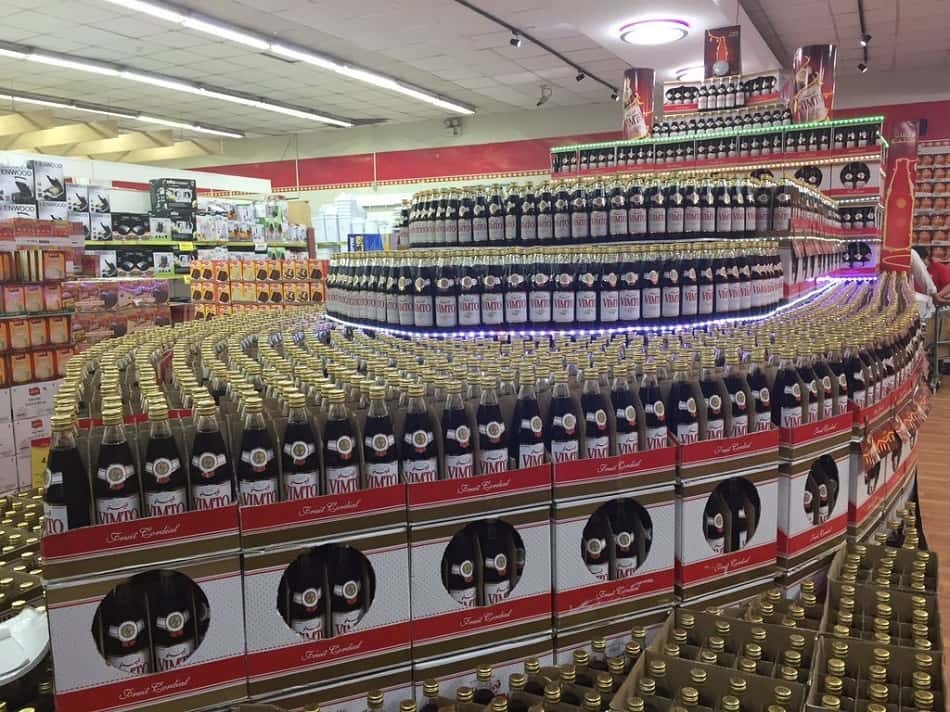As Ramadan's crescent moon has appeared on the horizon, millions across the Middle East are reaching for that unmistakable purple bottle. The ritual is as predictable as the season itself—dates, family gatherings, and Vimto flowing into glasses. But have you ever stopped to consider how extraordinary this is? A British cordial created in 1908 has become the unofficial beverage of the holiest month in the Islamic calendar.
At Jockamo Barnes, we're obsessed with brands that don't just participate in culture but actively shape it. Vimto's journey from medicinal tonic to Ramadan essential offers a masterclass in what we call "cultural instigation" — embedding a brand so deeply within culture that it becomes a tradition in its own right..
The numbers tell a compelling story: Aujan Industries sells nearly 20 million bottles during Ramadan alone (more than half of their annual Vimto Cordial sales). According to recent market analysis, Vimto commands up to 90% of the cordial market share in Saudi Arabia during the holy month. Vimto becomes so popular during Ramadan that stores historically have limit sales to two bottles per customer. This isn't merely seasonal popularity—it's cultural omnipresence.
The Accidental Cultural Alchemist
Vimto wasn't designed for Ramadan. John Nichols created it in 1908 as a herbal tonic promising "vim and vigor" to temperance-minded Brits in Cheshire, England. Originally registered as a medicine and named "Vimtonic," it was marketed to "build up the system" and eliminate "that out-of-sorts feeling." Its journey to Middle Eastern cultural cornerstone wasn't planned — it was seized through a fortuitous sequence of events..
In 1924, Richard Goodsir, a representative of the Kiwi boot polish company and friend of Nichols, took samples of Vimto cordial to India for local bottling plants. The initial market was nostalgic British troops from Northwest England stationed in the region. Interestingly, the local Indian population also developed a strong affinity for the drink.
When Indians began taking clerical jobs in the Gulf, many brought Vimto cordial with them. Eventually, one of them introduced the drink to Abdulla Aujan & Brothers, who in 1927 struck a deal to become the sole importers and distributors in the region.
The rest is history.
The Triple Threat of Cultural Embedding
What elevated Vimto from seasonal product to cultural institution? Our analysis revealed three critical mechanisms:
1. Ritual Engineering
Rituals aren't just things people do—they're embodied meaning. Vimto brilliantly engineered itself into the daily Ramadan routine through the act of preparation.
The ritual of "making Vimto"—diluting the cordial to personal preference, perhaps adding pine nuts or lemon—turned consumption into participation. Each family develops their own variation, creating a sense of ownership while maintaining the brand as the constant.
This echoes what we've seen with other ritual-embedded products like Champagne at celebrations or pumpkin spice lattes signaling autumn. The critical difference? Vimto didn't just attach itself to an existing ritual—it became a ritual itself.
2. Culture-Market Fit
If product-market fit is the holy grail of startups, culture-market fit is the philosopher's stone of brand building. The genius of Aujan was in recognizing a remarkable confluence of factors that created the perfect conditions for cultural instigation:
The Temperance Connection: Created during Britain's anti-alcohol movement and originally marketed as a non-alcoholic cocktail, Vimto arrived perfectly positioned for halal consumption. This was particularly significant pre-1952, when alcohol was still legal in Saudi Arabia, making Vimto a distinctly virtuous alternative.
Colonial Nostalgia with Local Adaptation: The drink carried prestige as a British import while being adaptable to local tastes. This dual identity, foreign yet familiar, created a unique position in the market.
Practical Adaptation: Shipped as a double-strength cordial to save on transportation costs (shipping extra water being economically wasteful), this necessity created the perfect ritual-ready format that would later become central to its cultural adoption.
Functional Benefit: The high sugar content and unique blend of fruits (grapes, raspberries, blackcurrants) and herbs provided an energy boost—ideal for breaking a day's fast.
Sometimes your product's greatest cultural potential lies not in its intended purpose but in unexpected contextual advantages.
3. Expectation Cultivation
Perhaps most brilliantly, Aujan strategically embraced Vimto's connection to Ramadan and positioned it explicitly as "the Ramadan Drink," creating an expectation loop that reinforces itself annually.
This tactical positioning was remarkably effective, allowing Vimto to remarkably overtake traditional drinks and juices that had been historically associated with the Muslim Holy month of fasting, such as Jelleb and Qamareddine. What makes this achievement even more impressive is that Vimto was a foreign import that displaced deeply rooted traditional beverages.
This psychological mechanism is powerful: when consumers expect to see a brand in a particular context, its appearance triggers a satisfaction response—a dopamine hit of fulfilled expectation.
We see this same mechanism at work in successful seasonal campaigns like Lexus's "December to Remember" campaign and even in the end credit scenes of Marvel MCU movies. The anticipation becomes part of the pleasure.
Recent neuroscience research supports this: anticipated experiences activate reward pathways in the brain similar to the experience itself. By cultivating this annual expectation, Vimto created a neurological association that competitors find nearly impossible to disrupt.
The Longer Lens: Cultural Instigation as Strategy
What can today's brands learn from Vimto's century-long masterclass in cultural instigation?
Patience Over Prominence: Cultural embedding happens on a timescale of decades, not quarters. Aujan's commitment to positioning Vimto for Ramadan required sustained investment before cultural ubiquity was achieved.
Context Over Content: Understanding the broader ecosystem in which your product exists often reveals opportunities invisible to competitors fixated solely on product attributes.
Ritual Over Reach: Creating participatory rituals around your brand builds deeper connection than mere visibility ever could.
Adaptation Over Intention: Vimto's greatest success came not from its original purpose but from how it was adapted to a new context.
In an era where brands chase viral moments and quarterly metrics, Vimto reminds us that true cultural relevance requires playing the long game. The brands that shape culture aren't typically the loudest or the most innovative—they're the most attuned to how they might meaningfully integrate into lives and traditions.
Beyond the Bottle: The Cultural Legacy
What Vimto achieved goes beyond impressive sales figures. By becoming embedded in Ramadan traditions, it transformed from product to cultural artifact.
Today, Vimto's cultural footprint extends well beyond beverage choice. It has inspired Ramadan-themed desserts across the Gulf (we’re particularly fond of M’oishi’s Vimto ice cream mochi), features in children's stories about the holiday, and appears in art installations exploring Middle Eastern cultural identity.
Social listening tools reveal that Vimto is mentioned in over 40% of Ramadan-related social media conversations in Gulf countries—a testament to its cultural saturation.
As we look toward the future, the principles that turned Vimto into a cultural institution remain relevant, though the mechanics have evolved.
Digital platforms create new opportunities for ritual formation and participation. Geographic boundaries of cultural practice have blurred. Yet amid this change, the fundamental human desire for meaningful ritual, for shared experience, and for the comfort of tradition remains unchanged.
The brands that will achieve Vimto-like cultural embedding in the coming decades will be those that understand this balance: leveraging new channels while respecting the timeless human needs that drive cultural practice.
As Ramadan begins and millions reach for their bottles of Vimto, we're reminded that the most powerful brand position isn't in the mind or even the heart—it's in the cultural fabric itself.










